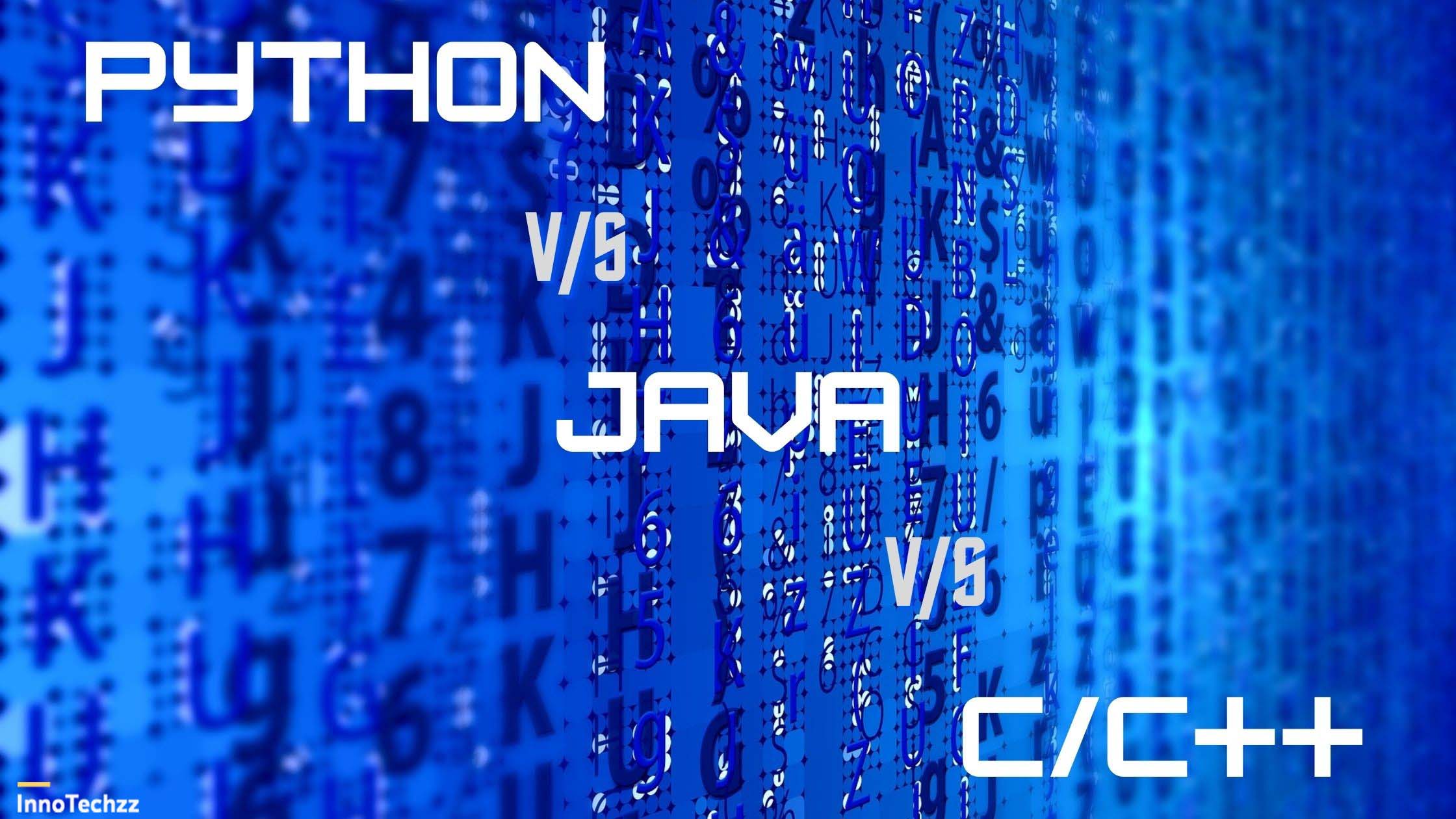Python vs C++. Java vs C++. Python vs Java

Programs has just become an integral part of our daily lives. Everything is now automated and linked through the Internet of Things.
C++, Java, and Python are the most commonly used programming languages among programmers.
C++ has grown in prominence as a quick and compiled programming language, and it is often the first programming language that a programmer learns.
Java is widely used because of its platform freedom, and a large number of desktop applications are written in this language.
Python is an interpreted programming language that is also a modern and fast-typing language.
Python vs C++
Python and C++ are two programming languages that are used for general-purpose programming, although they differ in many ways. C++ is a multi-paradigm language that includes compilation. It is derived from the C language.
Python is a high-level programming language with a wide range of applications. When creating Python code, a variable can be utilised without having to declare it.
In C++, a separate programme must be built for each operating system where the code will be used.
Python has the ability to 'write once, run anywhere,' which means that it can operate on any operating system that has Python installed.
C++ is prone to memory leaks because it lacks garbage collection and heavily relies on pointers.
Python comes with a built-in garbage collection and dynamic memory allocation system that makes memory management simple.
Before utilising a data type in C++, the developer must define it. As a result, there is less ambiguity about what the programmes perform, and error handling is easier than in Python.
When developing Python code, the user does not have to specify the type of data before using it, making the code simpler and easier to maintain. In C++, for example, a user must declare int a=5, whereas a=5 works just fine in Python.
Because it combines low-level and high-level language capabilities, C++ is referred to be an intermediate-level programming language. Classes, operator overloading, multiple inheritances, virtual functions, exception handling, and other object-oriented features are all supported in C++.
Python is well-known for its ease of use, readability of code, and status as a high-level programming language. Python has built-in techniques for running clean code on a small and big scale. Python is an object-oriented programming language.
Key Differences
C++ code is pre-compiled, whereas Python code is executed through an interpreter.
Garbage Collection is supported by Python, although it is not supported by C++.
Python is slower than C++, which is quicker than Python.
Rapid prototyping is achievable in Python due to the short size of the code, but it is not possible in C++ due to the greater code size.
Python is a simple language to learn, however C++ has a steep learning curve due to its many predefined syntaxes and structures.
Java vs C++
C++ just has a compiler, but Java has both a compiler and an interpreter.
C++ allows for both operator and method overloading, whereas Java only allows for method overloading.
Manual object management is supported in C++ via the new and delete keywords, but automated garbage collection is incorporated into Java.
Structures are supported by C++, however they are not supported by Java.
Java does not allow unions, although C++ does.
Python vs Java
There are numerous parallels between Java and Python. Both languages offer rich standard libraries and robust cross-platform compatibility. They both treat (almost) everything as though it were an item. Both languages compile to bytecode, although Python is compiled during runtime (most of the time). They both belong to the Algol family, however Python deviates from C/C++ more than Java.
Although both Python and Java are object-oriented languages, Java utilises static types and Python uses dynamic types. This is the most essential distinction, because it has a fundamental impact on how you design, create, and troubleshoot programs.
Key Differences
Python is an interpreted language, whereas Java is a compiled+ interpreted language.
Python is dynamically typed, whereas Java is statically typed.
Python is simple to learn and utilise, but Java has a steep learning curve.
Python is a high-level object-oriented programming language, whereas Java is a multi-platform, object-oriented, and network-centric programming language.
To read from a file in Java, 10 lines of code are required, but Python just requires 2 lines of code.
Posted By InnoTechzz